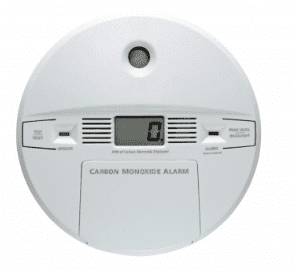
18 Nov Carbon Monoxide FAQS
With the weather cooling, many homeowners will begin switching on their heating systems for the system. However, if our heating systems aren’t working effectively, we can end up with carbon monoxide in our homes. This dangerous, deadly, and odorless gas is found when gas ranges, furnaces, small engines, stoves and other appliances aren’t working properly. Not sure what carbon monoxide is and why it’s so dangerous? Here are a few FAQs.
Carbon Monoxide FAQs:
What are the symptoms of carbon monoxide poisoning?
Headaches, dizziness, weakness, upset stomach, vomiting, chest pain, and confusion are among the most common symptoms of carbon monoxide poisoning.
Who is at risk?
Anyone in a home with carbon monoxide is at risk of carbon monoxide poisoning. However, infants, the elderly, and people with chronic heart disease or breathing problems are more likely to get sick.
How can I prevent carbon monoxide poisoning?
The best way to prevent carbon monoxide poisoning is by first installing a carbon monoxide detector in your home. Make sure that you check the batteries at the start of each season. You should also have your heating system, water heater and any other gas, oil or coal burning appliances tuned-up and checked by a professional technician each year. This will make sure that everything is working smoothly through the season.
Learn more about carbon monoxide poisoning here on the Centers for Disease Control and Prevention’s website. You can also check out our animated YouTube video below to learn more about the dangers of carbon monoxide in the home:
Have you scheduled your annual heating service? A tune-up can help prevent unnecessary heating service repairs and prevent carbon monoxide problems as we move into colder, winter months. Visit our website to learn more about carbon monoxide detection or call (412) 265-2662 to schedule an appointment with one of our professional technicians.

